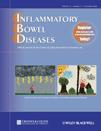Prevalence of penetrating disease and extraintestinal manifestations of Crohn's disease detected with CT enterography
Abstract
Background: This study was conducted to determine the prevalence of penetrating disease and extraintestinal manifestations of Crohn's disease (CD) identified by computed tomography enterography (CTE). We also sought to examine the percentage of clinically significant new noninflammatory bowel disease (IBD) related findings in these patients.
Methods: We analyzed the records of 357 consecutive patients with previously diagnosed CD evaluated at our institution who underwent a CTE between August 2004 and October 2005. Radiology reports were reviewed for the presence of penetrating disease (abscess, fistula, or phlegmon) or extraintestinal IBD manifestations (nephrolithiasis, cholelithiasis, sacroiliitis, avascular necrosis, deep vein thrombosis, or primary sclerosing cholangitis). Additional non-IBD-related abnormalities were also recorded, including any mass or cystic lesion. Urgent findings were defined as those that were deemed by the radiologist or ordering physician to require medical follow-up within 3 months.
Results: Of 357 patients identified (51% female) the median age was 41.6 years and median disease duration was 9.9 years. Of this cohort, 20.7% had penetrating disease (new finding in 58.1%) and 18.8% had extraintestinal IBD manifestations (new finding in 67.2%). Six patients had primary sclerosing cholangitis and portal/mesenteric vein thrombosis, respectively. In addition, 45.1% had non-IBD findings including 2 unsuspected malignancies. Most of these extraenteric non-IBD abnormalities were benign, with only 13.0% requiring urgent follow-up.
Conclusions: CT enterography is a valuable diagnostic modality for detecting both penetrating disease and extraintestinal IBD manifestations. These data add to a growing body of evidence that supports the use of CTE in CD diagnostic and management algorithms.
(Inflamm Bowel Dis 2008)




